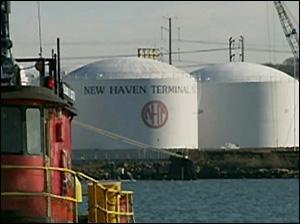By Pam Martens: December 1, 2014
If there’s a robust recovery in the U.S., somebody forgot to tell the commodities market, and the U.S. Treasury market, and holiday shoppers.
Crude oil plunged over 10 percent on Friday, following an OPEC decision to keep output at 30 million barrels a day. Both West Texas Intermediate (WTI), the U.S. domestic crude and Brent, the international benchmark, traded lower overnight at prices not seen since 2009 – in the midst of the financial crisis. Both WTI and Brent are now under $70 a barrel, seeing a decline of 38 percent this year with a loss of 18 percent in just November.
One might attempt to chalk up the plunge in oil prices to a situation unique to OPEC overproduction or supply coming from U.S. and Canadian shale production were it not for other economic indicators also flashing red.
The Bloomberg Commodity Index of 22 raw materials has lost 10 percent this year and is also back to levels last seen in 2009 in the midst of economic chaos stemming from the Wall Street collapse.
Global bond yields are also flashing a warning of an economic slowdown with 10-year or intermediate maturities in Germany, Italy, Austria, Belgium, Finland, France and Ireland setting all-time lows.
The yield on the U.S. 10-year Treasury note, which is a closely watched indicator of future economic expectations has been falling instead of rising. (If the economy is genuinely picking up steam, its yield should be rising in anticipation of future inflationary pressure from an increase in demand.) The 10-year Treasury has moved from a yield of 3 percent in January of this year to a yield of 2.16 this morning, briefly dipping below 2 percent in mid October.
There is also the fact that hedge funds are stampeding through the exit doors. According to Bloomberg News, quoting research from Hedge Fund Research Inc., “461 hedge funds liquidated in the first half of the year after 904 shuttered in 2013.” Last year’s closings were at a pace last seen in 2009 according to Bloomberg.
Then there is the shop-‘til-you-drop economic indicator. According to the National Retail Federation, total U.S. retail spending from Thursday through Sunday over the Thanksgiving weekend fell 11 percent from last year to $50.9 billion. That marks the second back-to-back year of declines.
Against this sobering backdrop is a lot of cheery chatter coming out of the Federal Reserve. It’s been serially talking up the notion that things are so rosy in the U.S. that it’s looking at a rate hike at some point next year, notwithstanding that much of the rest of the globe is slashing rates and fingering their worry beads over deflation.
On November 19, when the Federal Open Market Committee of the Federal Reserve released the minutes of its October 28-29 meeting, it carried this assessment:
“The Committee judges that there has been a substantial improvement in the outlook for the labor market since the inception of its current asset purchase program. Moreover, the Committee continues to see sufficient underlying strength in the broader economy to support ongoing progress toward maximum employment in a context of price stability.”
“Sufficient underlying strength” is the problematic phrase. The Fed may be privy to lots of current economic data gushing out of the 12 regional Fed banks but markets tend to look down the road (i.e., discount) what is coming down the pike in about six months. The collapse in benchmark interest rates, the collapse in industrial commodity prices is the markets’ way of screaming that there’s a serious slowdown looming on the not-too-distant horizon.
Is the Fed so insulated in its own data cocoon that it ignores market signals? Does it genuinely believe that the U.S. can remain an oasis of economic stability despite the economic headwinds facing Europe, China and Japan?
There is some anecdotal evidence that the Fed’s public posturing is far rosier than its closely guarded thought processes. Internal scholars at the Federal Reserve released a report in early August that clearly gave the Board of Governors pause. The Fed’s Division of Consumer and Community Affairs found that 52 percent of Americans would not be able to raise $400 in an emergency by accessing their checking, savings or borrowing on a credit card which they would be able to pay off when the next statement arrived.
That study is consistent with what the yield on the 10-year Treasury note is forecasting. A rate hike next year by the Fed is inconsistent with an ever-growing number of market signs.
What about the ebullient stock market you might correctly ask. Isn’t the fact that stocks continue to set new highs as valid an indicator as bond yields? Unfortunately, stock market signals can no longer be trusted as a result of the outsized involvement of corporations buying back their own stock.
According to data from Birinyi Associates, for calendar years 2006 through 2013, corporations authorized $4.14 trillion in buybacks of their own publicly traded stock in the U.S. In just the year 2013, corporations authorized $754.8 billion in stock buybacks while simultaneously borrowing $782.5 billion from credit markets. According to Jeffrey Kleintop, Chief Market Strategist for LPL Financial, corporations are now the single largest buying source for all U.S. stocks. The pace of corporate buybacks has continued this year with $338.3 billion sluiced into the markets, frequently through dark pools, in just the first six months of the year.


